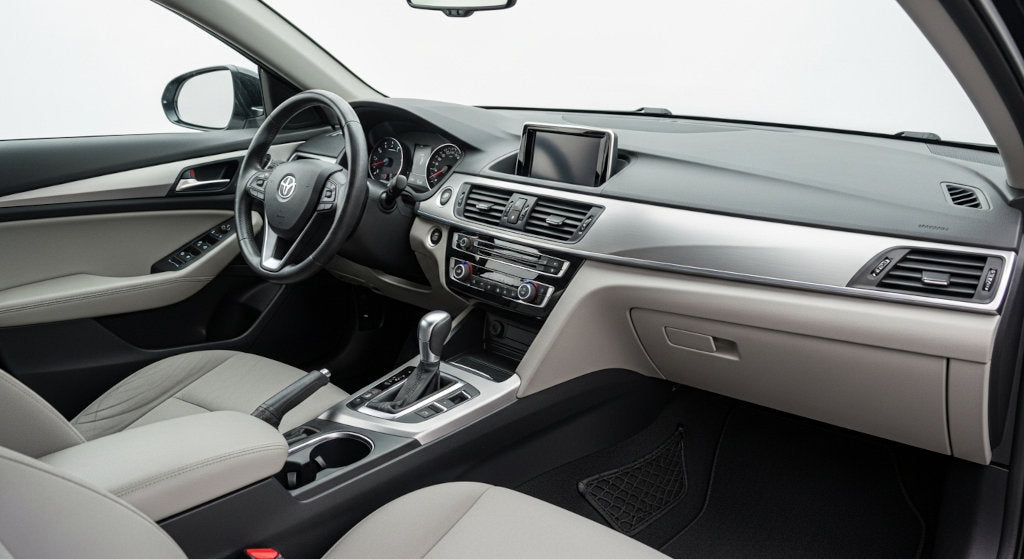That just-cleaned scent after a full car detail never seems to last. For a few days, everything feels spotless and refreshed, but then a familiar odor begins to creep back in. It might be cigarette smoke, old fast food, sweat from gym bags, or the faint mustiness that builds during humid months. The surfaces sparkle, yet the smell returns as soon as the windows close.
This happens because detailing focuses mainly on visible dirt, not invisible odor molecules. Those microscopic particles settle deep into seats, padding, and air vents where cloths and steam cleaners cannot reach. As temperature and humidity fluctuate, they reactivate and spread, releasing the same smell you thought was gone. True odor removal happens only when those trapped molecules are neutralized, not disguised.
Why Odors Return After a Professional Cleaning
Most interior cleanings treat the top layer, like the carpets, dashboards, and leather surfaces you can touch. Unfortunately, odor molecules are far smaller and sink into the materials underneath. Fabrics, foam padding, and insulation absorb oils, food residue, and smoke particles that remain long after the visible mess is gone.
As the cabin heats up, those trapped compounds loosen and release back into the air. When air conditioning or heat circulates through the vents, the smell intensifies. It can feel like the odor came back overnight, but it was never truly removed.
Regular air fresheners cannot fix this. They release fragrance particles that temporarily mask the issue. Within hours, the new scent fades while the original smell resurfaces. The only reliable solution is to chemically break down the odor molecules themselves using a neutralizing spray that binds to and eliminates them.
How Odor Molecules Work Inside Your Car
Odor molecules cling to both soft and hard surfaces. They attach to the microscopic pores in fabric, vinyl, and foam. The reason they are so persistent is that air movement alone cannot dislodge them. Steam and detergent can help loosen them, but if they are not neutralized, they simply settle deeper.
Think of it like smoke on clothing. You can wash the fabric, but if the air around it remains contaminated, the scent returns. Cars behave the same way because they are closed environments. The heat from the sun accelerates molecular activity, making the odor spread faster. Neutralizing sprays stop this process by chemically altering those molecules so they lose their ability to emit a scent.
The Hidden Role of Air Vents and Filters
Even when seats and carpets are spotless, vents often hold the most odor. Air conditioners collect condensation and organic debris that sit inside the ductwork. When you turn on the fan, that moisture releases a faint musty or stale smell that can dominate the entire cabin.

To treat this, start by running the air system on low and lightly mist an odor neutralizer near the intake grille under the dashboard or at the base of the windshield. Allow it to circulate for several minutes so it can reach the internal duct surfaces. This not only removes odor buildup but also prevents bacteria from growing again inside the vent system.
Replacing the cabin air filter regularly is another important step. Filters trap fine particles that absorb odor. If left unchanged, they keep reintroducing the same smell every time the system runs.
How to Apply Odor-Neutralizing Sprays Effectively
Odor neutralizers work best when applied as a final step after detailing or vacuuming. The cleaner the surface, the deeper the product can penetrate. Spray lightly on fabric seats, carpets, and door panels rather than soaking them.
Focus on high-absorption areas such as seat backs, headliners, and floor mats. Spray under the seats and in the trunk where airflow is limited. Let the car air out for ten to fifteen minutes with the doors open before sealing it up again. This allows the neutralizer to bond with odor molecules both in the air and on surfaces.
Consistent use after every deep cleaning prevents new buildup and keeps that just-cleaned scent lasting for weeks instead of days.
Key Tips for Lasting Freshness
For the best long-term results, make odor control part of your normal car care routine:
• Apply odor-eliminating spray after each detailing session or interior vacuum.
• Keep the air vents clean and replace filters every few months.
• Avoid leaving food wrappers or gym gear in closed cars overnight.
• Let the car air out briefly after cleaning to allow fresh circulation.
These small habits stop odors before they have a chance to settle back into fabrics or ductwork.
Why Masking Scents Never Works
Many drivers rely on “new car” air fresheners to recreate the feeling of a clean interior, but those strong perfumes only combine with underlying smells. The result is heavier air that feels scented but not truly fresh. Masking does not remove odor molecules; it only hides them temporarily.
Odor-neutralizing sprays take a different approach. Instead of coating the smell, they break it down chemically, leaving behind air that feels light and natural. The cabin smells genuinely clean because the odor source is gone, not hidden.
True Clean Beyond the Surface
A detailed car should look good, but it should also feel good to breathe in. Odor control completes the cleaning process by purifying the spaces your tools cannot reach. When seats, fabrics, and vents all receive attention, that recurring smell finally disappears for good.
Partnering with a reliable odor control company can make ongoing freshness easier to maintain. Their neutralizing formulations are developed to reach the deep fabric and vent layers where most at-home cleaning stops. Using those same types of professional-grade sprays as part of your regular car care routine ensures every drive starts in clean, balanced air.








